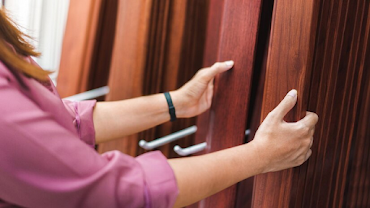Behind Closed Doors: Choosing the Perfect Toilet Door
- Get link
- X
- Other Apps
Introduction:
In the realm of interior design and architecture, every detail matters, including the seemingly mundane choice of toilet doors. While often overlooked, the selection of toilet doors can significantly impact the overall aesthetics, functionality, and privacy of a space. Behind closed doors, a world of options awaits those seeking the perfect balance between form and function. This article delves into the various considerations and trends that define the process of choosing the ideal toilet door.
Privacy Matters:
Privacy is paramount in any bathroom design, making the choice of toilet door a critical decision. Solid doors with no gaps or frosted glass options are popular choices, ensuring that the user feels comfortable and secluded. However, the evolving trend in modern interior design leans towards creative alternatives. Sliding doors, pocket doors, and barn doors provide unique solutions, minimizing the traditional swing door's space requirements while maintaining a private sanctuary.
Material Selection:
Toilet doors come in a plethora of materials, each offering distinct advantages. Wooden doors, for instance, exude warmth and elegance, making them a classic choice. However, moisture resistance is crucial in bathroom settings, prompting a rise in popularity for materials like PVC, fiberglass, and composite materials. These materials not only withstand humidity and moisture but also offer versatility in design, allowing for a wide range of colors and finishes.
Aesthetic Appeal:
Toilet doors contribute to the overall aesthetic of a space, playing a role in defining the interior style. Contemporary bathrooms often feature sleek and minimalistic designs, favoring clean lines and neutral colors. Traditional styles may opt for intricately designed wooden doors that add a touch of timeless elegance. For those seeking a bold statement, textured or patterned doors can become a focal point, injecting personality into the space.
Space Optimization:
In smaller bathrooms, optimizing space becomes a crucial consideration. Traditional swing doors may not be the most efficient choice in such settings. Sliding doors or pocket doors, which slide into the wall, can be space-saving alternatives. Barn doors, mounted on tracks above the doorway, offer a trendy and functional solution. The choice ultimately depends on the available space and the desired aesthetic.
Accessibility and Inclusivity:
Inclusive design has become a significant focus in recent years, and this extends to bathroom spaces. The selection of toilet doors should consider accessibility for all users, including those with mobility challenges. Wider doors and handles designed for easy gripping are examples of features that enhance accessibility, ensuring that the bathroom is a welcoming space for everyone.
Maintenance and Durability:
Bathrooms are high-moisture environments, and the chosen toilet door should be able to withstand these conditions. Durability and ease of maintenance are crucial factors to consider. Materials like PVC and fiberglass are not only moisture-resistant but also easy to clean, making them practical choices for busy households or commercial spaces with high foot traffic.
Natural Light and Ventilation:
The integration of natural light and ventilation is a growing trend in modern bathroom design. Consideration should be given to the impact of the toilet door on these aspects. Doors with glass panels or frosted glass inserts can allow natural light to penetrate the bathroom, creating a bright and inviting atmosphere. Ventilation is enhanced with strategically placed vents or permeable door materials, ensuring a fresh and airy environment.
Environmental Impact:
As sustainability becomes a focal point in design and construction, choosing environmentally friendly materials is a responsible choice. Sustainable wood, recycled materials, and energy-efficient manufacturing processes contribute to a reduced environmental footprint. Designing with sustainability in mind not only aligns with global environmental goals but also reflects a commitment to responsible and conscious living.
Cost Considerations:
Budget constraints often play a significant role in decision-making. Fortunately, there are various options available to suit different budgets. While high-end materials and intricate designs may be appealing, cost-effective alternatives like laminates or PVC can provide a balance between affordability and functionality. It's essential to weigh the long-term benefits against the initial investment to make a cost-effective and sensible choice.
Conclusion:
Choosing the perfect toilet door is a nuanced process that involves careful consideration of various factors. From ensuring privacy and optimizing space to embracing aesthetic trends and sustainable practices, the decision goes beyond mere functionality. The evolving landscape of interior design offers a myriad of options, allowing individuals to tailor their choices to specific preferences and requirements. Behind closed doors, the perfect blend of style and practicality awaits those who approach the selection process with a keen eye for detail and a commitment to creating a harmonious and functional space.
- Get link
- X
- Other Apps




Comments
Post a Comment